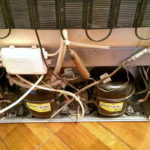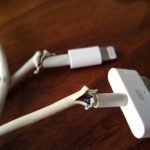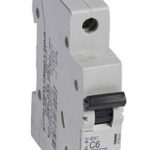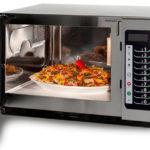Sometimes microwave oven works, but the dish put to heat remains cold. The reasons why the microwave does not warm can be both complex and require referral to a specialist for repair, and easily eliminated.
Contents
Why is there a problem
The main reasons why the microwave stops heating may include the following:
- The mains voltage has dropped. Sometimes there are power outages and the voltage drops by 20V. In such cases, the dishes are heated only at the edges, and the food remains cold.
- Mains overload. Two high power appliances are connected to the same power supply at the same time. This may affect the performance of one of them.
- Unsuitable mode is set. In most cases, it is "defrosting" mode, in which the food is not heated up to the end.
- The door is defective. The reason may be the breakage of the latch.
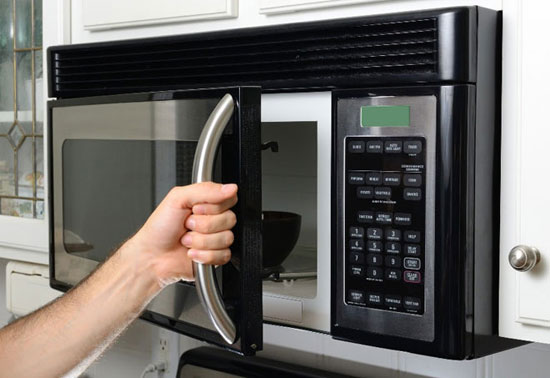
These are the simplest options that do not require repair. But there are more weighty reasons why the microwave heats badly:
- The timer or control unit is damaged;
- burned out transformer (high voltage, light) fuse;
- failure of electromagnetic lamp or magnetron;
- a condenser through passage is broken;
- multiplier that consists of 2 interdependent parts - high-voltage diode and capacitor - is out of operation.
It is difficult for a layman to determine which part needs to be replaced. To understand what the problem is, you need to know about the possible malfunctions.
Basic malfunctions
If the microwave heats poorly, buzzes or makes other strange noises, it means that the elements inside are damaged. You can detect and fix the cause yourself, if you know the main signs of damage to a particular element of the microwave oven. First of all, you need to unplug the microwave oven from the mains and carefully study its manual. The manual should have a diagram of the device of the device, where all the main elements are marked.
Fuse
The first thing to do is to unscrew the back cover. The fuse is a metal thread encased in a glass or ceramic tube. In microwave ovens there are several fuses - most often two.
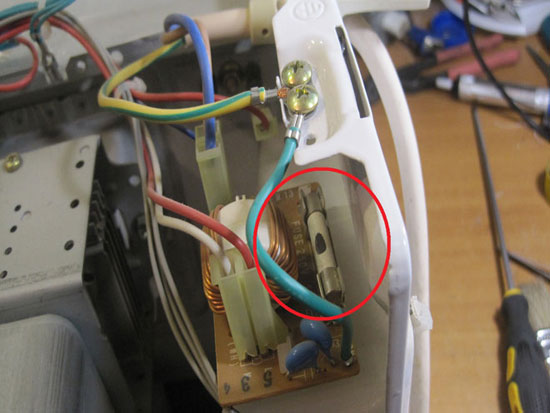
You need to see if the fuses are intact or not. Faulty ones are immediately noticeable: they bloat or become black, the filament bends. If there is nothing suspicious in the appearance, then you need to check the resistance. You will need an ohmmeter for the measurement.
The fuse should be replaced with a new one. In order not to make a mistake when buying, you should take the old sample with you. It is undesirable to try to solve the problem in some other way - the probability of fire with a damaged fuse is quite high
Capacitor
One of the most common reasons why the food heats too weakly is a faulty capacitor. This breakdown is the reason for the noise and humming of the microwave. To to check the condition of the capacitor will require an ohmmeter. It is necessary to wait until the capacitor is completely discharged beforehand. As evidenced by the measurement results:
- resistance is weak - it means that the part is defective;
- the arrow of the measuring instrument does not move from the place - the contacts of the capacitor are missing;
- if the arrow is frozen on the mark "∞" or slightly deviated from this mark - it means that the capacitor is in order.
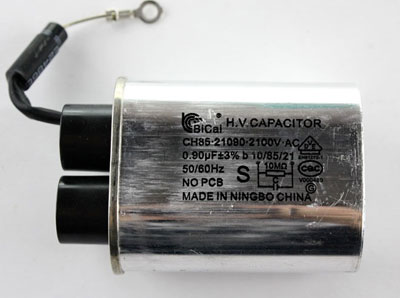
The faulty capacitor must be replaced.
High voltage diode
Faulty diode is not easy to determine at home because of the complexity of the resistance measurement procedure. The high voltage capacitor, which is connected to the diode, can be used to check if the diode is faulty. If the capacitor remains cold, then the diode is defective. Another indicator of malfunction is blown fuse. A strong hum when you turn it on and while the microwave heats up food also indicates a faulty diode. The element needs to be replaced.

Magnetron
The purpose of the magnetron is to generate an electric field of high frequency, due to which the products inside the chamber are heated. It is possible that the EM lamp pass-through capacitors are damaged. To be sure of this, you need to open the casing of the electromagnetic lamp. Then it is necessary to measure the voltage in the transformer. Any deviation from the 220 V mark indicates a malfunction. The broken element must be replaced.
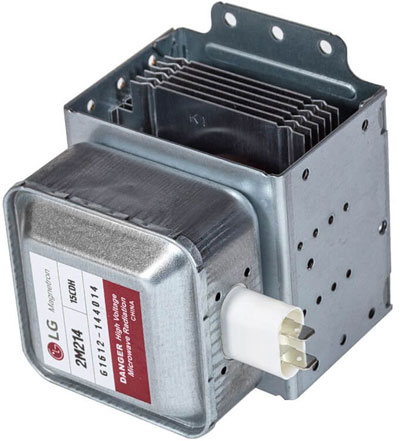
Faulty magnetron - Is the most common reason why the microwave oven does not heat. You can recognize a broken magnetron by a strong hum and noise during the operation of the microwave. At the same time, there are no signs of burnout (the light bulb is lit inside, there are no sparks). Then you need to open the case and conduct a visual inspection of the magnetron. If there is no visible damage and specific smell, then it is necessary to use an ohmmeter. If the magnetron burned out, then you need to buy a new one, exactly the same as the old one.
What to do if the microwave does not heat
Actions depend on why the microwave oven works, but does not heat. If it is an external cause (e.g. voltage fluctuations, a faulty outlet), then eliminating them is very simple. First of all, you need to unplug the microwave from the mains. Then you need to disconnect another powerful appliance, if it is connected to the same power source.
If this is not possible - for example, the refrigerator is plugged into the same socket - then you need to find a new place for the microwave oven and plug it into a different socket. Do the same thing if the oven is plugged into a new outlet and the working order of the outlet is suspicious (smoke, crackling, smells, or burning spots on the plastic housing).
If the microwave does not heat because it is in the wrong mode, it should be switched and reheated. If the cause is related to the door, you need to carefully inspect the latches. They may be broken and need to be replaced with new ones. If there is nothing wrong with the latches, all you have to do is slam the door closed firmly (Do not force the door, otherwise the latch mechanism or even the door itself may be damaged).
If the microwave works, but does not heat, the cause is most often a faulty parts. When the microwave is malfunctioning, the causes must be identified as soon as possible to avoid fire. Signs of damage - Noise, humming, crackling during operation, disconnection of the lamp, light fixture.
It is possible to carry out a diagnosis on your own. To do this, you need to de-energize the oven and wait for a complete discharge. Then, after studying the instructions, it is necessary to open the case and conduct a thorough inspection of the parts. It is worth measuring the voltage with an ohmmeter. If something is broken, the faulty part must be removed and replaced with a new one.
Sometimes the oven may turn on and off on its own during operation. This is often an indication that the fan is malfunctioning: either the The relay is broken.or the ventilation holes are clogged. If the ventilation system fails, it is imperative that the fan be replaced with a new one. If this is not done, the oven will begin to overheat, dust will penetrate into the interior of the device. Clogs are possible, there is a high probability of complete failure of the device, there is a great risk of fire.
If after replacing a damaged element microwave oven still does not work, then you need professional help. Without special skills, it is not safe to make complex repairs of the microwave by yourself, only a master can do it.
Related articles:
